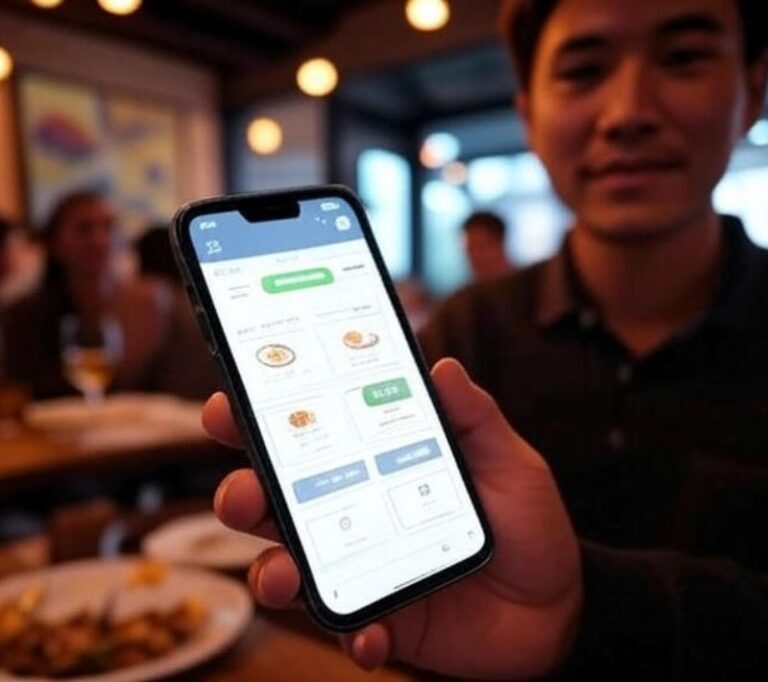Are you looking for a fresh way to boost your income? You want to keep your restaurant in the loop and trending? Host a virtual cooking class. These online classes are not only fun and interactive but also open up a new way to earn money beyond just serving food.
It does not matter if you run a fancy restaurant or a small neighborhood spot, virtual cooking classes let you connect with more people, even those who can’t visit in person. They’re a great way to build stronger relationships with your customers, turning them into loyal fans who come back again and again.
In this blog, we’ll show you how virtual cooking classes work, why they’re becoming such a smart choice for restaurants, and step-by-step tips on how you can start offering them today. Ready to cook up something new and exciting? Let’s get started!
What Are Virtual Cooking Classes?
Virtual cooking classes are live or recorded cooking sessions that are shared online with an audience. People join from the comfort of their homes and learn how to cook dishes guided by a professional chef, often the restaurant’s own chef.
These classes are hosted using video platforms like Zoom, Google Meet, or YouTube Live. Some restaurants also offer one-on-one sessions or private group bookings for special occasions like birthdays, date nights, or team-building events.
Why Restaurants Should Offer Virtual Cooking Classes
Here are a few strong reasons why this idea works:
1. New Revenue Stream
The most obvious benefit is extra income. Instead of just depending on food sales and dine-in services, you can charge people to attend your cooking classes. You can also sell add-on items like:
- Ingredient boxes
- Cooking kits
- Branded utensils
- Recipe books
These items increase your income per customer.
2. Reach More Customers
A virtual class can bring people together from anywhere in the world. You’re no longer limited by where your restaurant is located. Now, you can reach a global audience who loves food, cooking, and different cultures.
This means more people get to know your brand, and you can build a bigger fan base that stretches far beyond your neighborhood. It’s a great way to grow your restaurant’s reputation and connect with food lovers everywhere.
3. Boost Your Brand and Expertise
Teaching others how to cook not only shows off your skills, it builds trust and makes you an expert in your community. People start to see your restaurant as more than just a place to eat; it becomes a place full of knowledge and inspiration.
Where do you think that leads? Better word-of-mouth, more loyal customers, and a stronger, more trusted brand. Imagine your fans sharing your classes with their friends, that’s the power of teaching through virtual cooking!
4. Engage with Customers
Did you know virtual cooking classes are more than just teaching recipes? They’re a fun way to chat and connect with your customers in real time. You get to answer their questions, hear their cooking stories, and build a friendly community around your restaurant.
When people feel this kind of connection, they don’t just visit once, they become loyal fans who keep coming back. It’s like turning your customers into part of your restaurant family!
How to Plan Your Virtual Cooking Class
Planning your first class might feel like a lot, but breaking it into steps can help. Here's how to do it right:
Step 1: Choose the Right Dish
Pick a dish that’s popular on your menu, easy to prepare at home and uses ingredients people can find easily. It’s best to start simple, especially if most of your audience is made up of beginners.
Step 2: Select a Video Platform
Choosing the right platform is extremely important, and can be rather stressful, especially if you’re new to all these. However, it is necessary for a successful virtual cooking class.
If you want an interactive session where everyone can ask questions and feel involved, Zoom works great. For reaching a larger audience, YouTube Live lets you broadcast to many people at once. If you’re aiming for casual, fun demos, Instagram or Facebook Live offer a relaxed vibe that’s easy for people to join.
But whatever platform you pick, make sure it’s simple for your customers to access, especially if they’re new to online classes, so they can focus on enjoying the experience without any hassle.
Step 3: Set a Price
You can offer free short sessions as teasers, paid full sessions ($10 to $50+ depending on content) or even premium packages with ingredient boxes delivered before the class. Test different pricing options to see what works best for your audience.
Step 4: Promote Your Class
Want to get the word out about your virtual cooking class? Use social media like Instagram, Facebook, and TikTok to share fun clips and invites. Don’t forget your email newsletters, your website, and even your Google My Business events page to spread the news.
You can also team up with food influencers to reach more people who love cooking.
To help more people find your class online, use keywords like: “Virtual cooking class”, “Online cooking class in (your city)”, “Learn to cook from home”, “Restaurant cooking class online”. These keywords make it easier for your class to show up in popular searches and bring in more eager cooks!
Tips to Run a Successful Virtual Cooking Class
Now that you’re ready to host your virtual cooking class, here are some tips to make sure everything goes smoothly:
- Practice First: Before the live event, run a test class. Check the sound, lighting, and camera angles. Make sure your cooking steps are clear and easy to follow.
- Use Multiple Camera Angles: If possible, use two devices: one focused on your face and the other on the cooking station. This gives viewers a better view of the action.
- Engage With Your Viewers: Welcome your viewers, ask questions, and read comments during the class. Keep the tone friendly and fun.
- Send Recipes Beforehand: Let participants prepare by sharing the recipe and ingredient list a few days before the class. This helps them feel more involved.
- Record the Session: Always record your classes. You can share the replay with those who missed it, sell the recording later or use clips for marketing.
Extra Ways to Make Money From Virtual Cooking Classes
Beyond the class fee, here are more ways to earn:
1. Sell Ingredient Boxes
Try to partner with local delivery services to send pre-measured ingredients to customers before the class. This makes it easy for them and adds to your revenue.
2. Offer Private Classes
Host private sessions for:
- Birthdays
- Date nights
- Family reunions
- Corporate team-building
These special events can be priced higher and marketed as exclusive experiences.
3. Create a Cooking Course Series
Instead of one-time events, build a series of classes. Teach different cuisines, cooking methods, or seasonal dishes over several weeks. Offer bundle pricing for people who register for the full course.
4. Launch a Recipe eBook
After a few sessions, compile your recipes into a downloadable PDF or printed book. You can sell it as a companion product to your classes.
Real-Life Examples: Restaurants Doing It Right
Many restaurants have already seen great success from this idea.
- Dishoom (UK): This Indian restaurant brand hosted a virtual class teaching their famous bacon naan. It sold out quickly and helped the brand grow internationally.
- Eleven Madison Park (NYC): During the pandemic, they offered exclusive Zoom classes. Their top chef guided people through gourmet meals at home.
- Your Local Spot Can Be Next: No matter where you are, your restaurant can also go global by offering cooking classes online.
Ready to Start Your First Virtual Cooking Class?
Virtual cooking classes are more than just a trend. They are a sustainable and scalable way to earn money, connect with customers, and grow your restaurant brand. By teaching others how to cook your signature dishes, you’re turning your kitchen into a global classroom. And the best part? You don’t need a huge budget to start.
All you need is a good recipe, a friendly face, and a passion for sharing your love of food. If you're a restaurant owner thinking of trying something new, virtual cooking classes are a low-cost and high-reward idea. Start small, test it out, and grow from there.
So turn on the camera, fire up the stove, and welcome the world into your kitchen!




